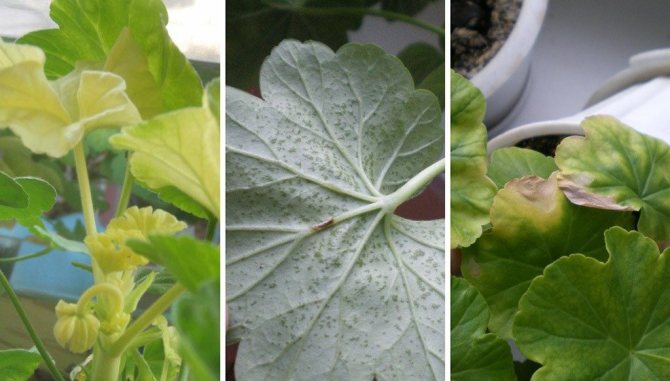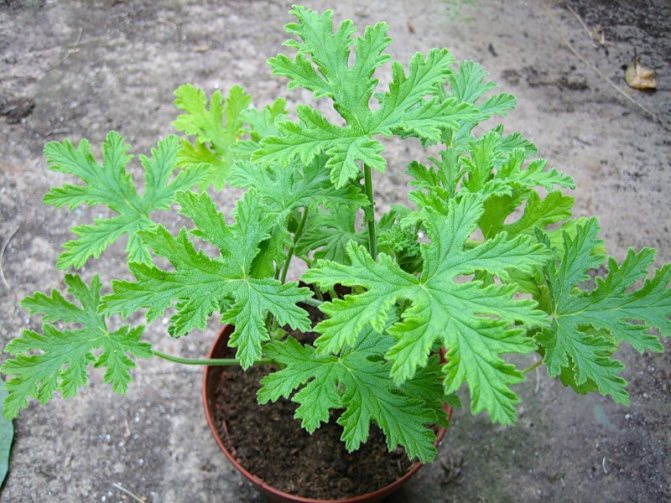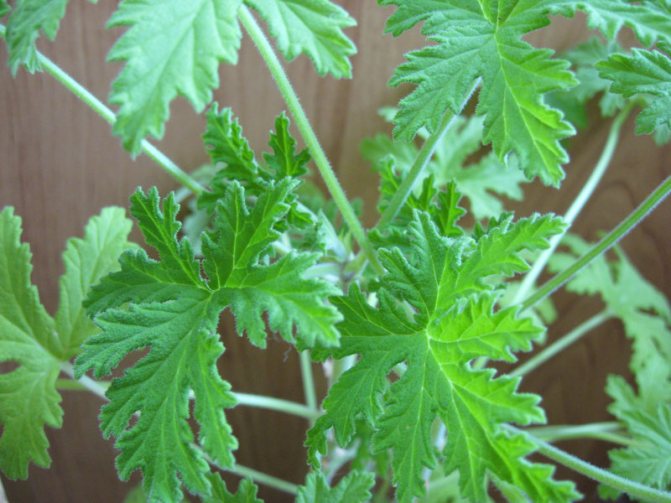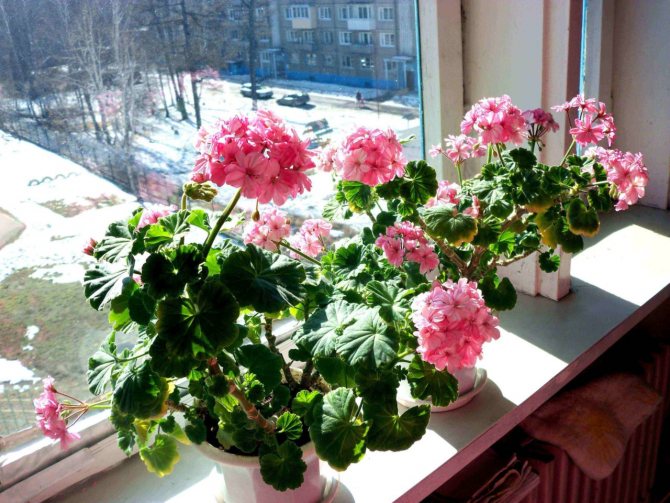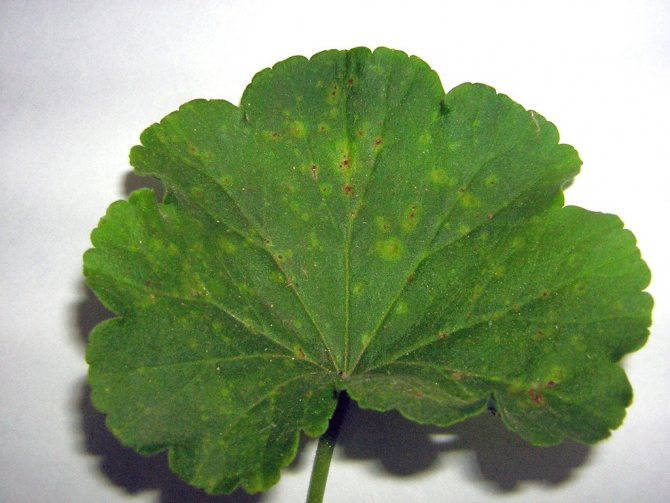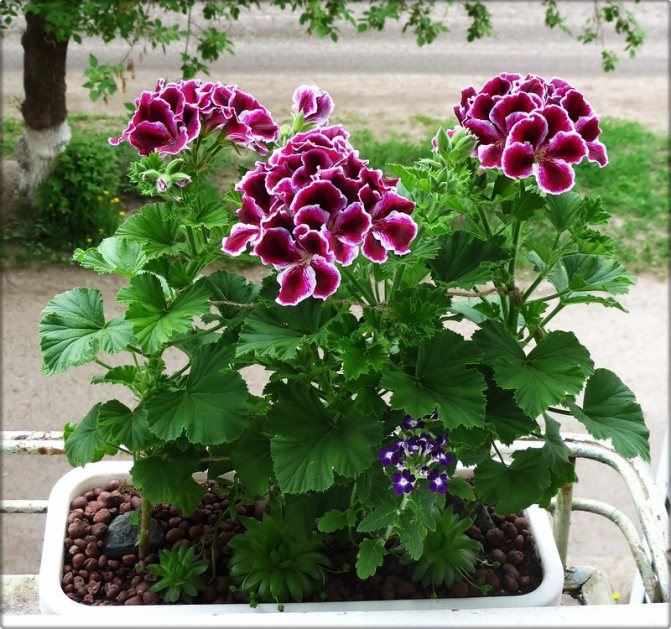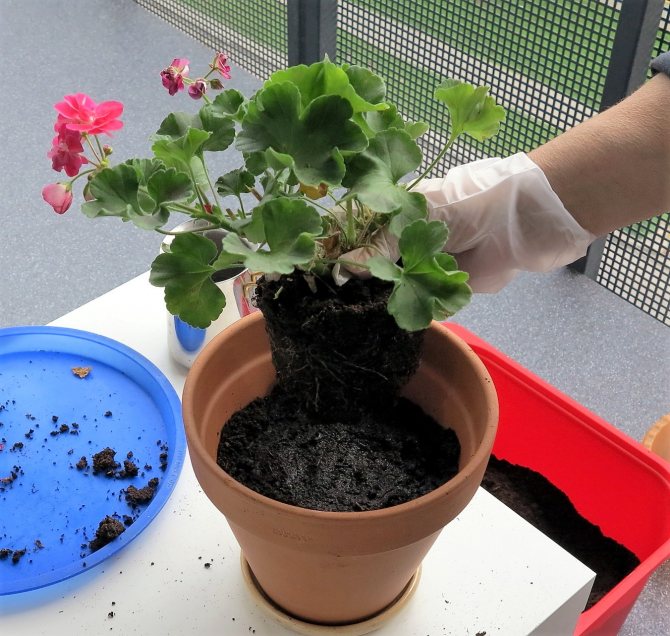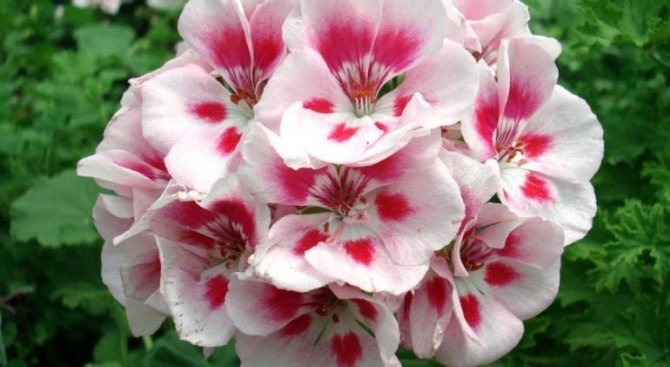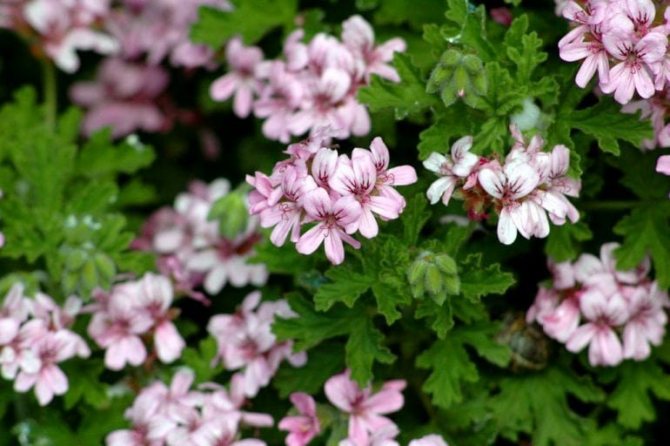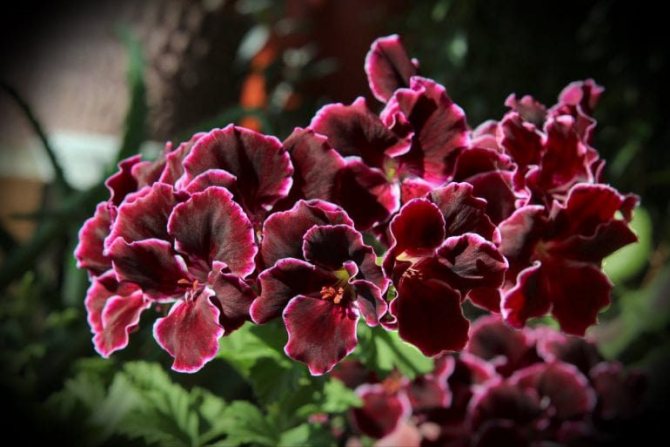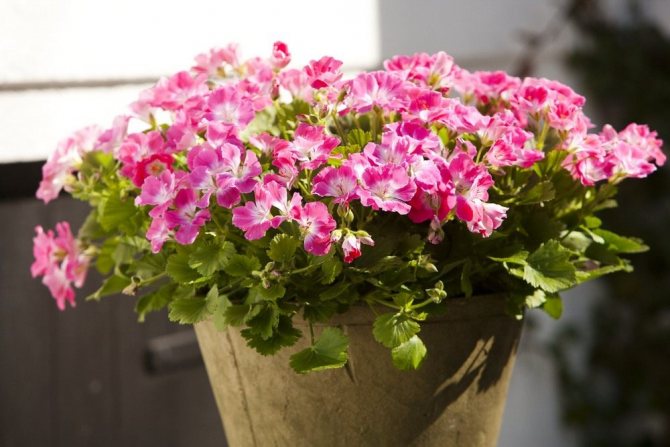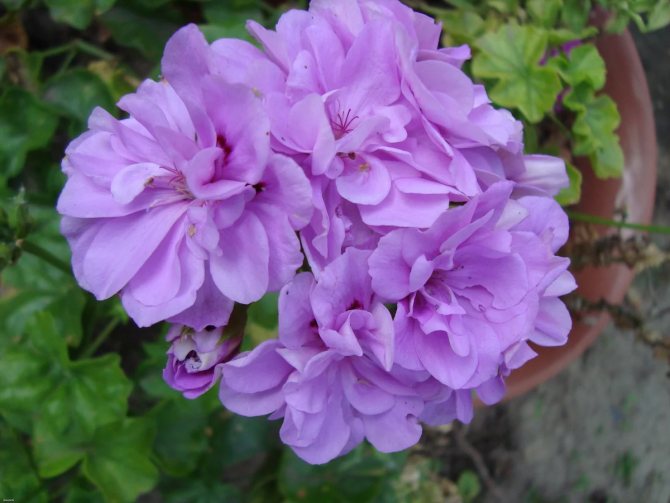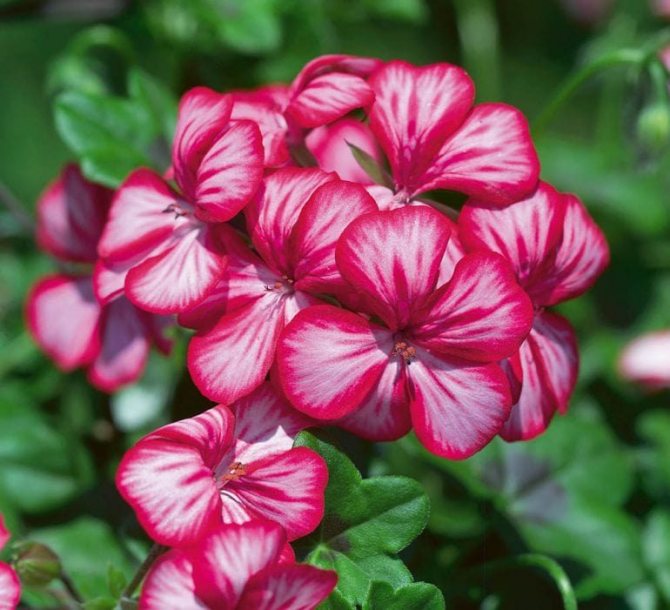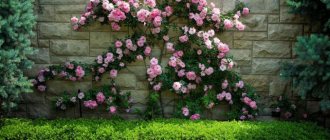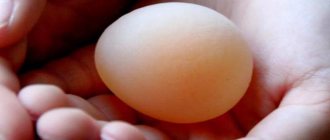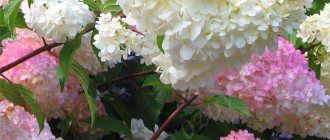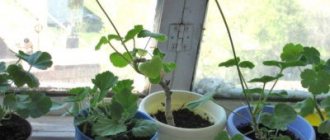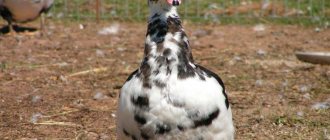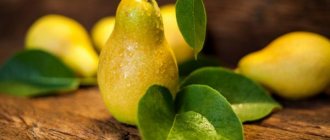The geranium flower, which is also called the crane, is a genus of plants belonging to the Geranium family. The category includes more than 400 varieties of crops, which are represented by grasses and bush forms. Of these, about 40 have taken root well in Russia. In the wild, the plant is found almost all over the world.
The name "geranium" is of Greek origin and means "crane" in translation. This name was not given by chance - the fruits of the flower are very similar to the beak of a crane. Geranium is successfully grown both in flower beds and at home. Pelargonium propagation is carried out in three ways: cuttings, leaves and seeds. The flower retains its decorative properties for 4-5 years, with proper care this period increases to 10 years. A characteristic feature of geranium is the presence of dark green leaves with a fluffy surface. The article will discuss what is geranium home care, flowering, wintering.

Geranium in a pot
Description of the plant
Geranium has one advantage - it is not demanding to take care of at home, so it will bloom from the beginning of summer until the very frost. If you take a little care of the decorative culture, you can achieve lush inflorescences and dense foliage that will decorate the garden.
At the moment it is known about 300 types of geraniums, which is popularly called a crane, a health resort, a stork's beak.


There are annuals and perennials of this species. They grow in temperate latitudes and tropical areas. As soon as the flower became popular, breeders began for it and bred many hybrid species, with various shades of inflorescences.
The geranium flower forms fruits and seeds, but hybrid varieties cannot be grown, since they do not retain their maternal characteristics when sown. Such specimens are usually propagated by cuttings.
All geranium species are able to survive on acidic, slightly acidic and neutral soils, because they adapt to local habitat conditions. This plant is suitable for beginners - home care will allow you to gain experience in the cultivation of garden and indoor crops.
Caring for geraniums at home will require minimal knowledge and skills - watering, controlling humidity and lighting, and transplanting. It is important to organize a lighted place for growing geraniums, then its leaves will grow larger, and the shoots will not stretch out.
Caution! Some types of pelargonium contain toxic substances
Diseases and pests
Geranium is infrequently exposed to disease. But improper care or proximity to diseased plants can turn into a problem for a flower. Due to the specific smell, pests also do not very often disturb geraniums. Basically, the plant that is outdoors in summer is at risk. A caring florist will definitely conduct examinations of green pets so as not to miss the onset of a disease or an invasion of pests. To know what you have to deal with, carefully study the table.
Possible diseases and pests, control measures and prevention - table
| Diseases and pests | Symptoms | Control measures | Prophylaxis |
| Rust | Rusty growths appear on the underside of the leaf. The leaf plate gradually turns yellow, dries up and falls off.Weakened plant does not bloom |
|
|
| Stem or root late blight | The stems of the plant begin to rot. The flower withers, the leaves wither. Blooming stops. Depressions appear on the affected roots. In a neglected state, the rotten areas of the plant are covered with a gray fungal bloom. | The most effective drugs in the fight against the disease are Ridomil, Previkur, Profit-Gold. It is important to process the flower at emergence of the first signs diseases |
|
| Bacterial rot | The leaf plate becomes covered with watery spots, which then dry out. The affected leaf dries up, but does not fall off. |
|
|
| Whitefly | The butterfly lays the larvae on the inner surface of the leaf. Young larvae feed on plant juices. This weakens the flower, the leaves begin to turn yellow and curl. |
|
|
| Aphid | Sucking insects hide on the underside of the leaf. Eating plant juices, weaken it. As a result, the leaves begin to turn yellow and curl. | To fight the pest, choose one of the drugs:
|
|
How to recognize diseases and pests - photo gallery


Rust is easy to recognize by reddish spots on the leaf.
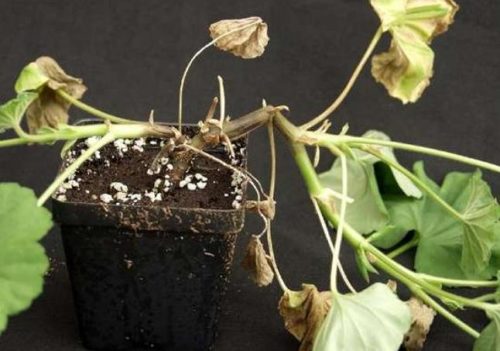

Late blight begins with rotting of the stem, gradually moving to the roots
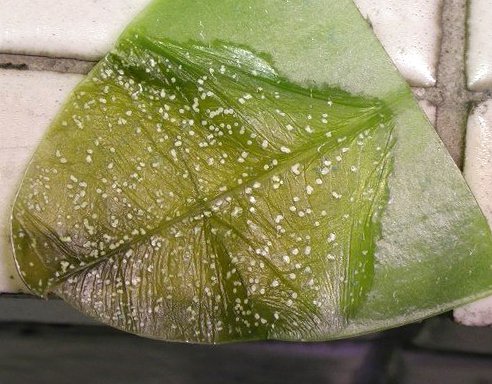

Bacterial rot first appears as wet spots on the leaf
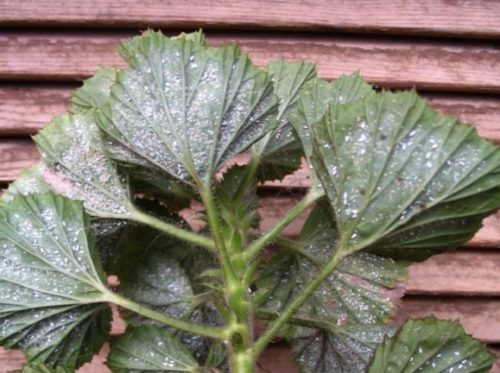

Whitefly is the most common insect on geraniums; larvae bring great harm
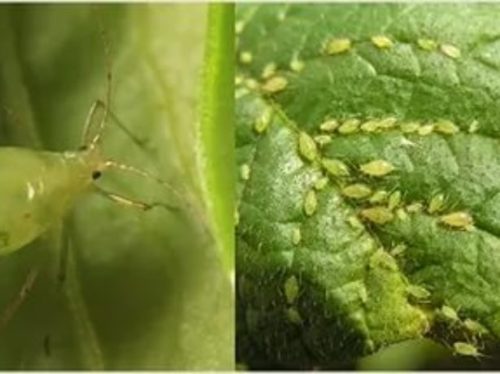

Small insects can form large colonies on the underside of the leaf
Differences between geranium and pelargonium
Those plants that grow on windowsills are most often pelargonium. Similar features of plants are manifested in the shade of flowers, the shape of leaves with a fringe, and aroma.
Differences between geranium and pelargonium:
- Geranium is an open field plant. Pelargonium is an indoor culture.
- Pelargonium flower stalks look richer and larger. In geraniums, they are solitary, more like field species.
- Pelargonium comes from southern countries, so you cannot leave it outdoors for the winter - the plant will die. Geranium can be grown in the garden - the seeds germinate on their own with the onset of spring, the plant is able to bloom at a temperature of 12 degrees.
- Geranium flowers are symmetrical in the shape of petals, in pelargonium they are asymmetric - the top two are usually larger.
- Geranium leaves are more carved, and pelargonium is also called a kalachik, since the leaf plate is solid, resembles a rounded kalach.
Video: Geranium for Beginners
Now you can inspect your plant on the windowsill and determine which species it belongs to. Since everyone is used to calling these species in one word - geranium, then later in the article we will talk about a home indoor plant, especially since the care of both species is not very different.
Interesting! Both species cannot be crossed, since they have a different genetic code.
Mr. Summer resident warns: the most common mistakes when pruning
Often, when pruning a plant, flower growers do not think about what can be harmful. In order for the process to benefit and heal the flower, the rules are followed:
- when the situation changes, geraniums are allowed to adapt to a new place and only then they are taken for pruning;
- be sure to rinse and disinfect all instruments, otherwise you can infect and the pelargonium will die;
- after full pruning "under the stump", water it a little bit and only when the soil layer has dried by 4-5 cm, otherwise the roots will start to rot from oversaturation with moisture.
Features of home care
The growing season for geraniums begins in spring. With good autumn watering and feeding, the culture gained strength and is ready for vegetation, flowering and seed formation. Flowering will begin in May, until then the plant should build up green mass and accumulate nutrients.
Watering
During the growing season, as the temperature rises, home geraniums need more water, which should be at room temperature. It is not advisable to water the plant with cold tap water directly from the tap - no culture likes this procedure.
Geranium tolerates a temporary overdrying of an earthen coma, provided that it is regularly fed, but leaving it without water is often not recommended - the culture will lose its immunity and begin to hurt.
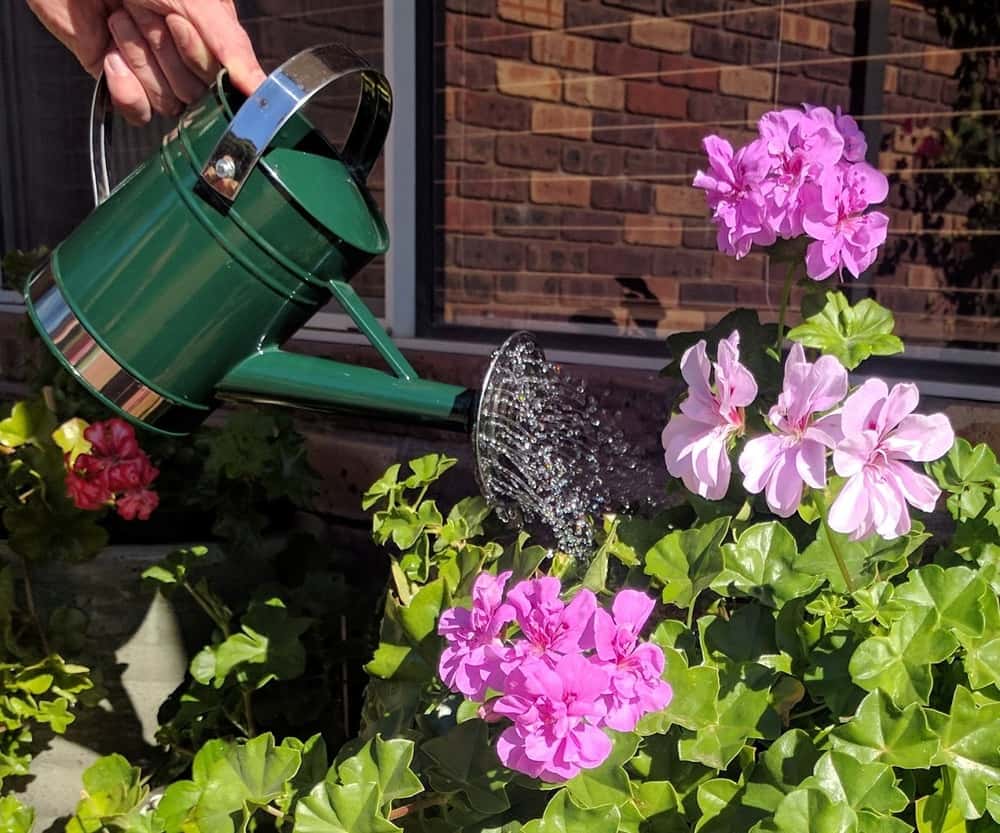

It is also impossible to transfuse the plant - the root system, being constantly in the water, can begin to rot due to a lack of oxygen. If the bottom of the pot is constantly in contact with the liquid, the plant will turn yellow and shed its leaves. How to water geranium: it is necessary to put the pot higher so that there is a layer of air between the horses and the water.
Starting from November, watering is gradually reduced, as the plant goes into a dormant period. Geranium drinks little and does not consume nutrients. It is also necessary to reduce the air temperature around, for example, take the pot out to a glazed but unheated balcony.
Periodically, you need to check how dry the earth in the pot is in order to add water. Abundant watering at low wintering temperatures is unacceptable - this will provoke the death of the roots and then the rest of the plant.
Lighting
Any ornamental plant needs sunlight. Caring for a potted geranium at home is all about creating the right lighting for the flower to bloom. The active formation of chlorophyll and a good metabolism stimulate the setting of buds-inflorescences, which in Pelargonium can be very large.


The plant does not like direct sunlight, so on the southern windows it is shaded with curtains so as not to burn the leaves.
With a lack of light, shoots can stretch out and geranium loses its decorative effect. At the same time, the leaves turn out to be rare and small due to insufficient metabolism. If this happens, the flower must be moved to a lighter place, otherwise there will be no flowering.
Air humidity
Humidity for geraniums in a pot does not need to be artificially maintained - the flower adapts well to room conditions and temperatures. If the plant hibernates on the windowsill, then you will have to figure out how to protect the greens from hot air currents. Some housewives hang wet towels on radiators or build screens to dissipate the heat.


In summer at temperatures above 30 degrees geranium can be sprayed and even bathed - this reduces the temperature of the tissues and the plant feels good. When sprinkling with a shower, the soil is covered so that the roots breathe. The only species that does not like spraying and gets sick if water drops fall on the leaves is Grandiflora or Royal Pelargonium.
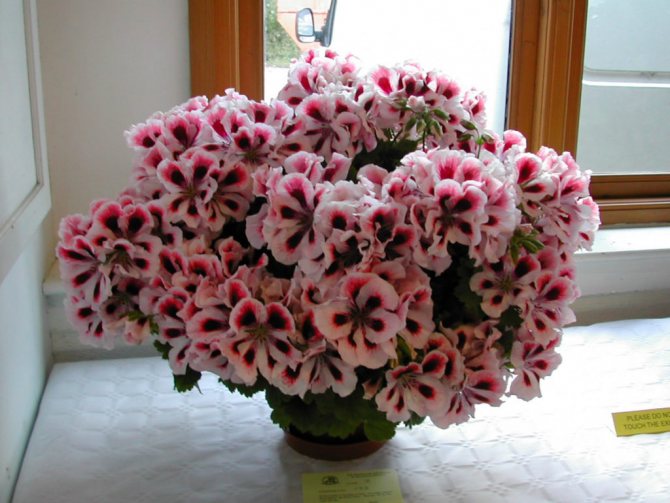

Formation of a standard tree
To form a strong trunk, it is necessary to attach it to an even vertical support. The lateral shoots appearing on it are cut off after the formation of the fourth leaf on them. On the stem itself, the leaves are preserved. When it has grown to the desired size, the foliage is removed, they proceed to regular pinching of the top. This contributes to the formation of a dense crown. Geranium bloom will begin no earlier than a year later.
The flower is placed in a warm, bright place where there are no direct rays of the sun. Abundant watering and frequent feeding serve as accelerators of the process.
Top dressing
Top dressing is the main condition for how to care for geraniums at home so that they bloom. Ornamental flowering plants need a full range of nutrients - nitrogen, potassium and phosphorus, but they need to be distributed correctly.
Phosphorus is a binder for nitrogen and potassium and must always be in the soil. Nitrogen and potassium are introduced in turn - first, nitrogen for growing greenery, closer to flowering - potash dressings. It is potassium that helps to form lush umbellate peduncles, the flowering of which will last until winter.
So that nutrients are not wasted in vain, the fading umbrellas are cut off, since in dry form they continue to draw on microelements for seed ripening.
Potted crops need every 2 - 3 years change the soil, as the organic component is depleted in it, which affects the immunity of plants. Young pelargoniums are transplanted every 2 years, when the roots fill the entire volume of the container. Young bushes - once a year in the spring.
If you do not change the soil, you need to use organic fertilizing based on humic acids. A concentrate solution of mullein or chicken droppings is suitable. They feed the humus-producing soil bacteria. They need to be used in small quantities, since pelargonium does not like concentrated organic matter.
In the spring
In spring, the most important nutrient is nitrogen in combination with phosphorus. When caring for geraniums, you can use mineral fertilizers for fertilizing, for example, Azofos or individual substances:
- superphosphate;
- urea;
- phosphate rock;
- ammonium nitrate.
Fertilizers are diluted strictly according to the instructions, you can not get enough sleep - there will be no harm. The first time you can apply top dressing in March, stimulating the growth of leaves and shoots.
Complex mixtures are chosen in the "spring" direction - with a large amount of phosphorus and nitrogen. These are Ammophos, Azophos or special mixtures for flowering plants with the addition of trace elements.
In the spring, it is useful to feed the geranium with a solution of trace elements - this is necessary for the plant to accumulate strength for long flowering.
At the end of April, the composition of the fertilizer is changed so that it contains more potassium. It is impossible to delay with nitrogen fertilizing - they inhibit the setting of buds and cause excessive growth of shoots. With a lack of potassium, there is a chance to get a large lush green bush without flowers.


In summer
In the summer, feeding is carried out 2 - 3 times a month and are brought in with irrigation water. While the houseplant geranium forms flower stalks, you need to continue to add nutrients on time, and remove the drying leaves and flowers with scissors.
In summer or spring, plants can be propagated and transplanted. Until the root system has taken root, it is impossible to introduce mineral mixtures - this can weaken the culture and cause root rot.
In order not to wonder when to feed geraniums, home care can be facilitated by using fertilizer sticks or organo-mineral mixtures, which gradually release microelements into the soil. Sticks are stuck into the soil, and long-acting fertilizers are mixed with the soil in the spring.
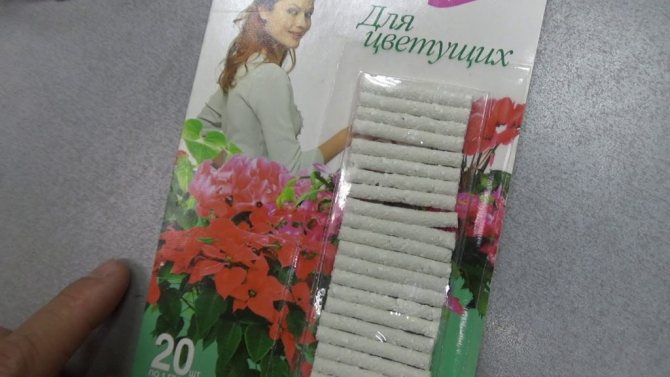

Important! It is impossible to make liquid solutions without preliminary moistening of the soil, as this leads to burns of the roots, as a result of which the plant will not be able to feed and assimilate trace elements
Closer to flowering, geraniums must be fed with iodine - it enhances metabolism and improves the quality of peduncles, their splendor and brightness. Enough 1 drops pharmacy drug for a liter can of water. No more than 50 ml of solution is added to one pot, pouring it closer to the walls so that it does not hit the central shoot.


Of other useful trace elements, it is worth highlighting magnesium sulfate or magnesium sulfate. It also has a positive effect on the splendor of the peduncles. 3 g per liter of water.
Correct transplant
Geranium bad about transplant, and therefore it is better not to change the pots more often 1-2 times a year. The reasons may be the following factors:
- The roots became cramped: you can check this by carefully pulling the geranium out of the pot;
- Due to excess moisture, the flower began to wither;
- Despite leaving, geranium does not develop and does not bloom;
- The roots are very bare.
Pelargonium is usually transplanted in the spring, from February to April, but this is not essential: you can transplant a plant even in winter, only the bush will take root longer. It is also not recommended to touch a flowering plant: it already spends a lot of energy on flowering and will not accept a new home well. Instead of replanting, you can renew the topsoil, adding fresh soil as needed.
Some gardeners, as additional care, transplant geraniums outside to the flower bed every spring, and in the fall they "take" it back. This helps to heal the plant itself, and at the same time split roots for propagation.
- It is necessary to prepare all the tools, and treat the pot with a bleach solution if it has already been used previously for another plant. This will avoid the transmission of the disease.
- Drainage is laid out at the bottom of the pot. These can be small stones or foam.
- Geranium is watered to keep the ground moist. Then you need to turn the pot over and carefully remove the plant from it, being careful not to break or damage the roots. You can tap lightly on the sides and bottom to separate the soil from the pot.
- The roots are examined, and if rot or signs of disease are found, they are carefully pruned.
- The flower is lowered into a pot and the empty places are covered with earth, lightly watered, compacted and more soil is added.
- After transplanting, geraniums are removed to a dark place for a week, then transferred to the designated place. After 2 months, you can add top dressing.
In a similar way, the plant is transplanted from the street in the fall before the onset of frost. If necessary, you can make gentle pruning... To do this, shorten all the shoots, leaving about 20 cm. The cut should pass a few millimeters from the node. During the winter, geraniums will not be able to give strong enough stems, and therefore pruning will have to be repeated in February-March.
Pruning
Pruning is necessary to stimulate the shrub to constantly grow in width and eliminate thickening. The plant does not grow lateral shoots on its own, therefore, without forming, you can get a long branch, the leaves on which are only at the top - not very aesthetically pleasing and decorative. You can prune branches at any time of the year, even in winter:
- In the spring, the event is held before the start of sap flow in the tissues - February or early March. Geraniums will take time to recover from the procedure, but the bloom promises to be lush.
- In the summer, prophylactic cleaning of the bush from yellowed leaves, dry peduncles and branches is carried out.
- In the fall, in preparation for wintering, all peduncles are removed, long shoots without leaves are shortened, leaving cuttings 10 - 15 cm long with leaves.
In order for the bush to grow in breadth, all branches growing inside the bush are removed.
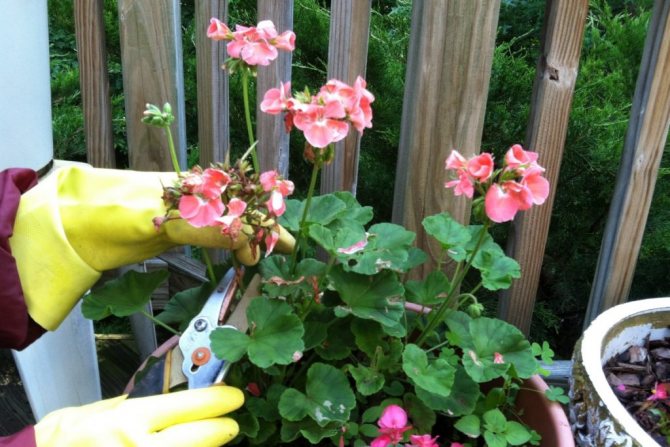

How to form a standard plant from geranium
Geranium can be formed not only as a lush bush or a falling plant in a hanging pot, but also as a standard tree. It looks very impressive and unusual: a straight bare trunk can reach one meter in height, and its top is decorated with abundantly blooming bouquets of flowers.
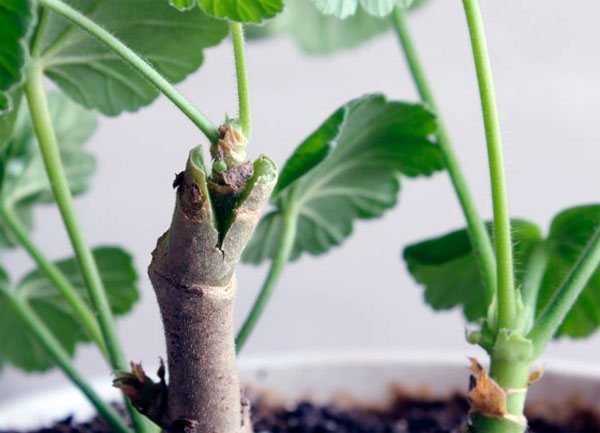

Such geranium formation requires a completely different approach. First, you need to choose a healthy, tall and well-blooming geranium species.
All side branches are removed from the bush, and it is tied to an upright support. The main trunk in this case not trimmed or pinched, he is allowed to grow to the height that is planned.
Further, as the plant grows, the newly appearing side shoots are removed. Only the top five branches need to be left. After the geraniums reach the desired height, pinching of the uppermost bud is carried out to ensure enhanced branching of the plant.
All new shoots are pinched after the formation of the fourth bud. This will give the geranium a spherical shape. Of course, the formation will take a fairly large amount of time, but as a result, you can get a very original interior decoration. The flowering of boles, as a rule, occurs after a year.
You can see with your own eyes how geranium is trimmed and how to pinch it, in particular for lush flowering, in the following video:
Open ground transplant - care features
In the warm season, when there is no risk of night frosts, the care of pelargonium can be transferred to the garden or to fresh air. In this case, you need to plant in a shaded place - under tall trees or shrubs. Indoor geraniums can burn and not recover.
What gives a transplant in open ground:
- Energy replenishment.
- Complex of nutrients and interaction with soil microflora.
- Irrigation with soft rainwater, which is better absorbed in tissues.
It happened that the transplantation saved a dying plant, which did not have enough light, nutrients in the pot. It was possible to achieve a weak flowering, although they no longer counted on the survival of the flower.


How to water geraniums transplanted into the soil is more abundant than in a room, since evaporation is more intense in summer. If it's hot, then every evening the soil must be moistened to the depth of the roots.
Outdoors, there is a risk of pest infestation, such as spider mites. These parasites are omnivorous, therefore they inhabit all the plants in the garden. Periodically, you need to check if there is a thread between the leaves. Fortunately for geraniums, when leaving in the open field, the plant gains strength, and pests bypass it.
The healing properties of geranium
In folk medicine, they are used as leaves, roots and flowers of pelargonium.
As part of this plant, you can find glycosides, pectins, gums, phytoncides, tannins, vitamins, and other useful elements. The main chemical element is calcium. Substances in geraniums normalize hormonal levels, reduce inflammation, normalize cardiovascular activity, increase immunity, and normalize the digestive tract.
Geranium leaf compresses are used to treat local inflammation and sprains and to relieve teething in infants. Both fresh and dry leaves can be used.
Alcohol tincture is taken both internally for the complex treatment of neuroses, insomnia and depression, and externally - for rubbing with radiculitis and arthritis.
Essential oil is used to soothe nervous excitement and to relieve wounds and cuts.
Geranium does not bloom - what to do
Lack of flowering is the first sign that the plant is missing something.It can be light, food, water. There can be both a shortage of these factors and an overkill - an excess of dosages of liquid, fertilizers, direct sunlight, damaging young greenery.
To achieve flowering, it is necessary to analyze all the conditions in which the culture is located and change them in the right direction.
Flowering can be delayed with strong formative pruning. The plant gets wounds, sometimes an infection gets into them. To survive, the flower uses all its strength to fight the fungus or bacteria.
Top dressing can be "one-sided", that is, with a predominance of organic matter, which is unacceptable for geraniums.
Wintering in a dark room, at the bottom of the balcony, where no light enters. Chlorophyll is formed constantly, even in winter, so plants need to turn on phytolamps and artificially increase daylight hours so that they begin to actively grow in spring.
Geranium does not like drafts. Cold streams negatively affect immunity and the plant prolongs flowering, which will take even more strength.
To stimulate flowering, in the fall, all shoots are cut off on the bush, leaving on each branch 2 - 3 kidneys.
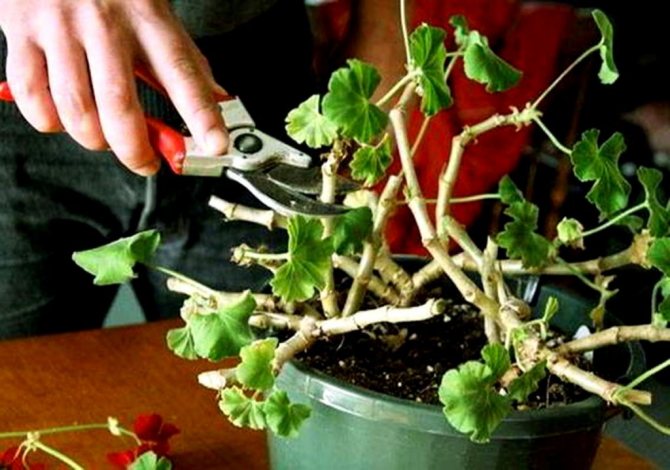

Install the pot in a cool, bright room, occasionally watering. In the spring, feed with iodine solution a couple of times along the edge of the pot. In a month, the buds will be tied and the geranium will bloom all summer.
Types of indoor geranium
A huge number of varieties allows you to choose the most beautiful flowers for yourself and decorate the windowsill or veranda with luxurious shades.
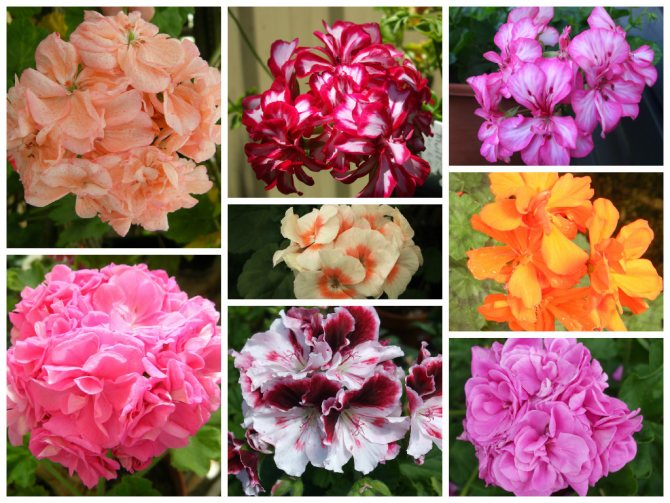

The following varieties are considered popular:
- Climbing geranium or Ampelnaya. The branches grow up to 90 cm, hang down, so planters are chosen for planting geraniums. Inflorescences are collected in a brush, different shades. The leaves have a smooth surface. The ampelous species is also called ivy geranium, and it has more than 70 subspecies.
On a note! Curly geraniums turn an open veranda into a shady, pleasant corner in one summer. To achieve lush and active growth, the trellises are pulled, and the pots are placed at the height of the roof on the sunny side.
- Royal. This is a capricious variety that grows up to 60 cm in height. Flowers are very large, double, umbellate. The shade of the peduncles is white, purple. The shape is round, serrated.
- Pinkish. Flowers of white, pink, red shades are similar to roses. Smooth petals give the perfect resemblance to small rosebuds.
- Fragrant. This is the most fragrant type of exotic with the smells of lemon, cinnamon, rose, apple and more than 150 species. Small decorative leaves and flowers in the shape of butterfly wings look very beautiful. To achieve flowering, plant breeders take care of the temperature - the flower does not tolerate heat.
- Fragrant geranium. It is called zonal pelargonium and is distinguished by the height of the bush. The variety grows up to 80 cm, the leaves are round, on long stems. Umbrella peduncles with different colors.
The most unpretentious variety is Ampelny. It is planted on the street or in the house. When the air warms up in spring, the flowering of geraniums will not keep you waiting, and for the winter the plant sheds its foliage on its own.
Reproduction methods
Propagating a non-capricious plant is as easy as caring for it. You can get new plants in three ways:
- cuttings;
- dividing the bush;
- sowing seeds.
To make everything clear, let's take a closer look at each of the listed methods.
Cuttings
This technique is the simplest and most reliable. Using it, new plants can be obtained very quickly. It is desirable to carry out the procedure in conjunction with circumcision - in the fall or early spring.
For rooting, use only adult shoots that are already formed and lignified. Young immature plants should not be cuttings. Their rooting rate is low.
The prepared cutting can be rooted in the soil or in a container with water.
Rooting in soil
- Select an apical stalk of an adult shoot.
- Cut so that it is 8 to 12 cm long.
- Make a cut under the leaf node from which the roots will develop.
- In order for the cut to dry out a little, hold the cutting in the air for a couple of hours.
- At this time, you can start preparing the soil mixture. To do this, mix peat, perlite and sand in equal proportions.
- Sprinkle the soil mixture into small pots or disposable cups with holes on the bottom.
- Process the cut of the cutting with Kornevin and bury it in the moistened ground by 3 - 5 cm. Preliminarily cut off the lower leaves from the cutting.
- Containers with cuttings can be placed in a warm and bright place, watering as the soil dries up.
- You can build a greenhouse and root there. But the shelter requires periodic ventilation to keep the moisture level at an average level.
- Roots appear quickly, after 2 - 2.5 weeks. Successful rooting will be marked by the appearance of new leaves.
- Transplant the new plants into separate containers with suitable soil.
Rooting in water
For rooting in water, the cutting is prepared in the same way. But then water will be used to build up the roots.
- Pour clean water into a transparent container. It should be so much that the handle is half submerged.
- Place the rooted plants in a bright and warm place.
- Make sure the water does not bloom. Activated carbon will help to avoid this.
- Once there is sufficient root mass, the plants can be planted in separate pots.
Dividing the bush
This method is also straightforward. But it should be carried out only with a planned transplant of an overgrown bush.
- Water the geranium a couple of days before the procedure.
- Remove the plant carefully from the pot.
- Try to free the roots from the ground.
- Do not break the rhizome, but cut it with a sharp knife.
- Try to injure the roots as little as possible.
- Delenki must have a root system and shoots.
- Dry the incisions slightly and sprinkle with crushed coal.
- Plant the cuttings in separate containers.
After planting the cut, prune it. Cuttings can be used for rooting.
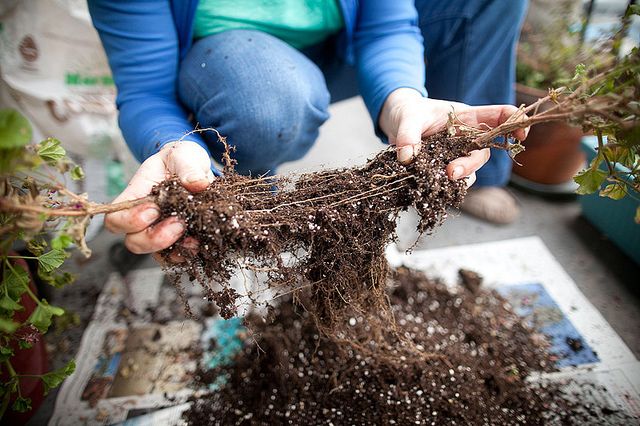

Combine dividing a geranium bush with a transplant
Sowing seeds
This method is more time consuming and troublesome than grafting. Therefore, it is not used so often. But the seeds allow you to acquire new varietal plants, saving on their purchase. Very often breeders resort to this method in order to obtain hybrids with improved characteristics and greater decorativeness.
But this method of breeding geraniums is fraught with many pitfalls. Therefore, choose seeds of inexpensive varieties to get started.
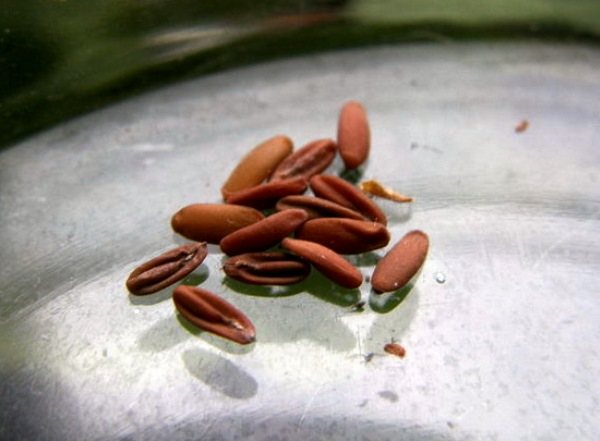

Geranium seeds will help create a whole collection of varietal plants
Many growers consider the second half of January to be the best time for planting seeds. By the spring you will have young plants.
- Scarify the seeds to help the seeds germinate faster. The procedure consists in breaking the integrity of the hard shell. To do this, the seed can be scraped with a knife or rubbed on sandpaper. But only without fanaticism.
- Soak the prepared seeds in water for a couple of hours.
- During this time, prepare a light soil mixture by mixing universal soil with coarse sand or perlite in a 3: 1 ratio.
- Pour the soil mixture into a low, wide container and moisten.
- Sow the seeds at a distance of 5 cm from each other. Then sprinkle with a small layer of soil.
- Cover the container with glass or put on a bag to create the necessary microclimate inside. The temperature for normal germination should be maintained within 20-220C.
- Ventilate the shelter periodically to avoid mold growth.
- The seeds should appear in less than 2 weeks.
- When 2 - 3 leaves appear on the seedlings, you can dive the plants into separate pots. After a month, you can plant it in a permanent place.

